This easy sourdough flatbread recipe is made with only a few simple ingredients. This is the perfect recipe to use for pizza, sandwiches, or for dipping into hummus.
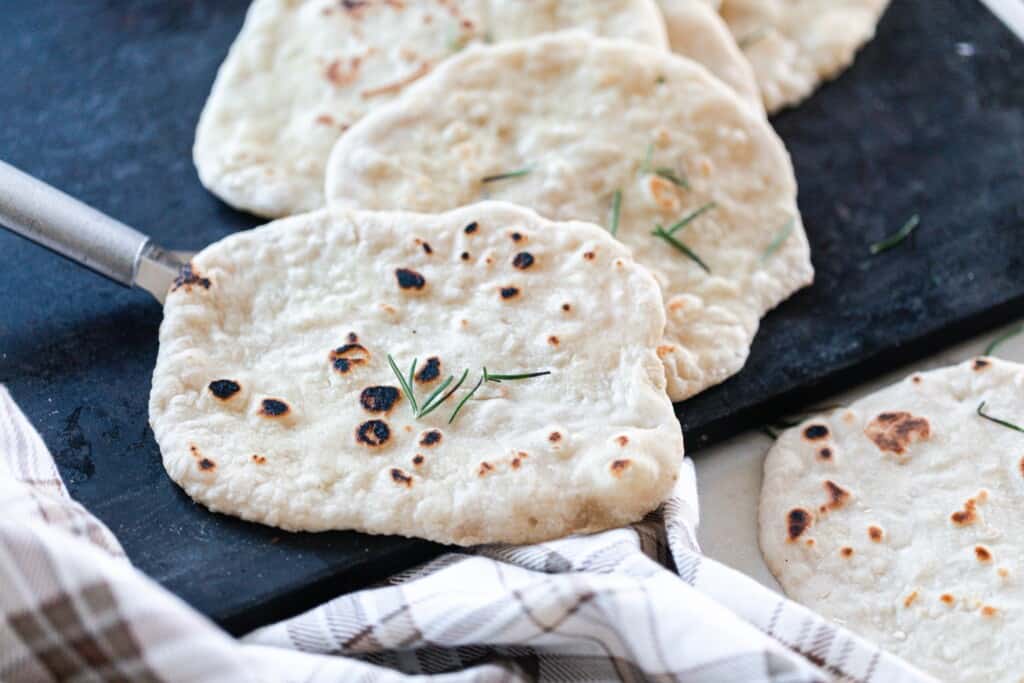
When I first started my sourdough starter back in 2010, I was super excited to start making sourdough bread. Who wouldn’t be?! It makes the grains more gut healthy, and fermenting creates a depth of flavor that you just can’t find in store-bought baked goods.
The process of slow fermenting with the native yeasts just has an artisanal flavor that you can’t buy. Unless, of course, you live in a super cool area where people are selling homemade sourdough bread!
If you are a real-food foodie like myself, you probably know that sourdough bread takes a lot of pre-planning. Do you want to have fresh-from-the-oven homemade bread this Saturday? Well, I hope you started thinking about that desire on Thursday!
Me, personally? I’m not much of a planner. I love sourdough bread as much as the next traditional foods gal, but guess how often we actually have it??
It wasn’t long into my sourdough journey that I discovered there is such a thing as no-wait or quick sourdough recipes. This recipe is super flexible; you can allow it to ferment for 2-4 hours or even 24 hours. Hallelujah. If we are going to use it to make sandwiches for lunch, I’ll just prep the dough the night before or that morning.
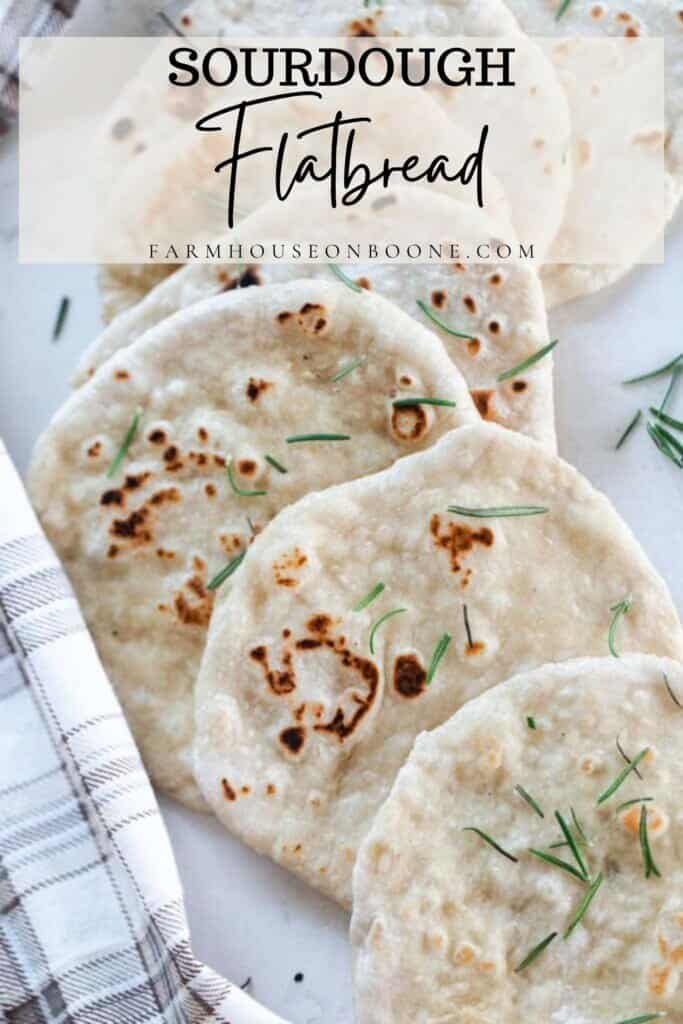
What is long-fermented sourdough?
Have you ever heard of phytic acid? Basically, it’s an anti-nutrient found in grains, beans, and nuts that interferes with the absorption of certain nutrients. They are present on grains to keep them from spoiling.
There is a reason they are there, but there is also good evidence that our bodies weren’t meant to handle them. Proper preparation of grains eliminates most, if not all, of the phytic acid in offending foods.
This is the very reason traditional cultures soaked and fermented their grains, seeds, and beans. These days we’ve lost that art. And, what have we found? People can’t handle grains anymore.
Long fermented sourdough is a process of giving grains time to ferment and sour. This helps to remove the anti-nutrients. Also, a healthy starter is comprised of native yeasts, so the long fermentation gives the baked good a chance to rise, without adding any additional yeast. No little packet of instant yeast needed!
Most recipes on the internet claim to be “sourdough” but actually only call for a cup or two of fresh starter and then make up the rest of the recipe with flour. If the gut healthy benefits come from long fermenting grains, this doesn’t do you any good. Sure, a tiny portion of the recipe is comprised of fermented grains (the sourdough starter), but the majority is just milled wheat (the flour) that has had zero time to ferment and sour.
For this recipe, you can do it either way. Allow it to ferment for a shorter period like 2-4 hours or it can be fermented as long as 12-24 hours to really get the most benefits from the fermentation.
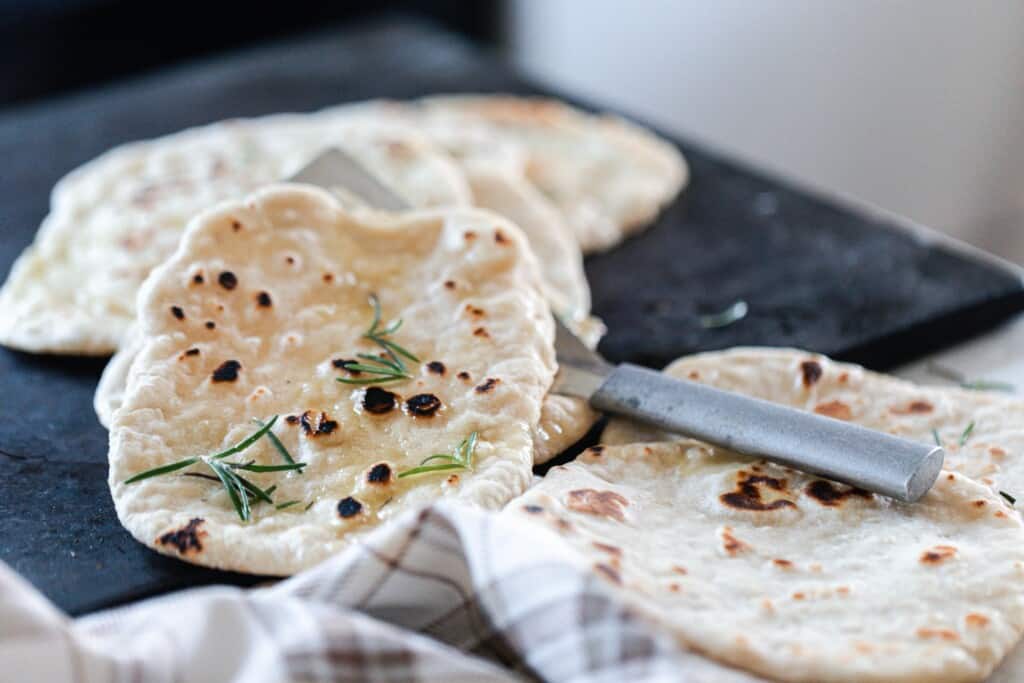
Tips:
- To make a dairy-free flatbread, substitute the milk for a dairy-free milk or just use water.
- For this recipe, you can use active sourdough starter or discard, either will work.
- This is a quicker type of sourdough recipe. You can allow it to ferment for 2-4 hours, or up to 24 hours. Whichever you prefer and can tolerate.
- You can use it as bread to make sandwiches, or serve them as a healthy, whole grain, long fermented appetizer. You could even cut them in large chunks and use them as croutons for a salad.
- They are a perfect little afternoon snack for kids, or late night salt-craving-satisfier for adults.
Easy Sourdough Flatbread Ingredients
- Flour – I used freshly ground hard wheat berries. You can just use all-purpose flour.
- Sourdough starter – activated starter or discard will work.
- Salt – don’t skip this crucial ingredient. It adds so much flavor, and the flatbread will taste just bland without it.
- Milk – Whole milk is preferred because it contains healthy fats and lends itself to a better feel.
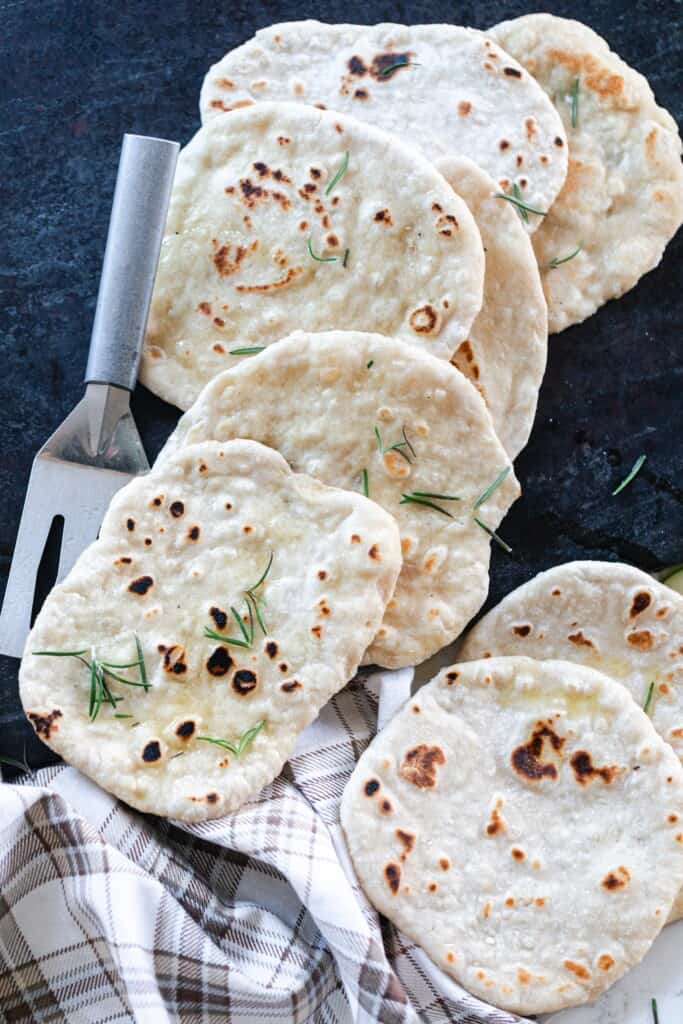
How To Make Sourdough Flatbread:
Mix sourdough starter, flour, milk, and salt together. Knead for a few minutes.
Cover and allow to rise for for 2-4 hours (or overnight for long fermentation).
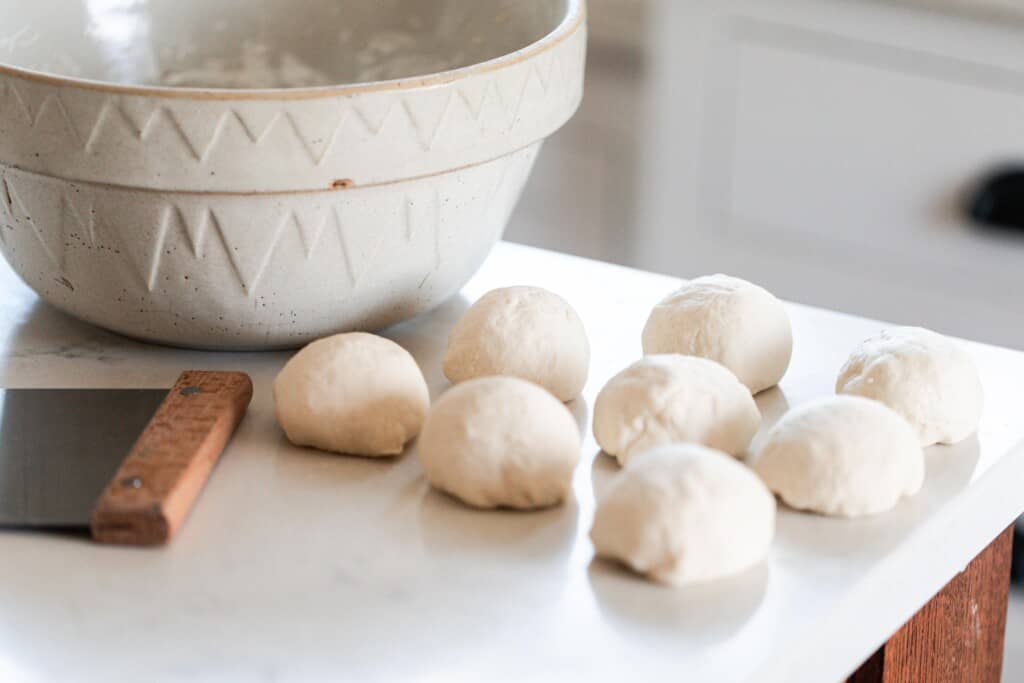
Divide into 8 equal pieces.
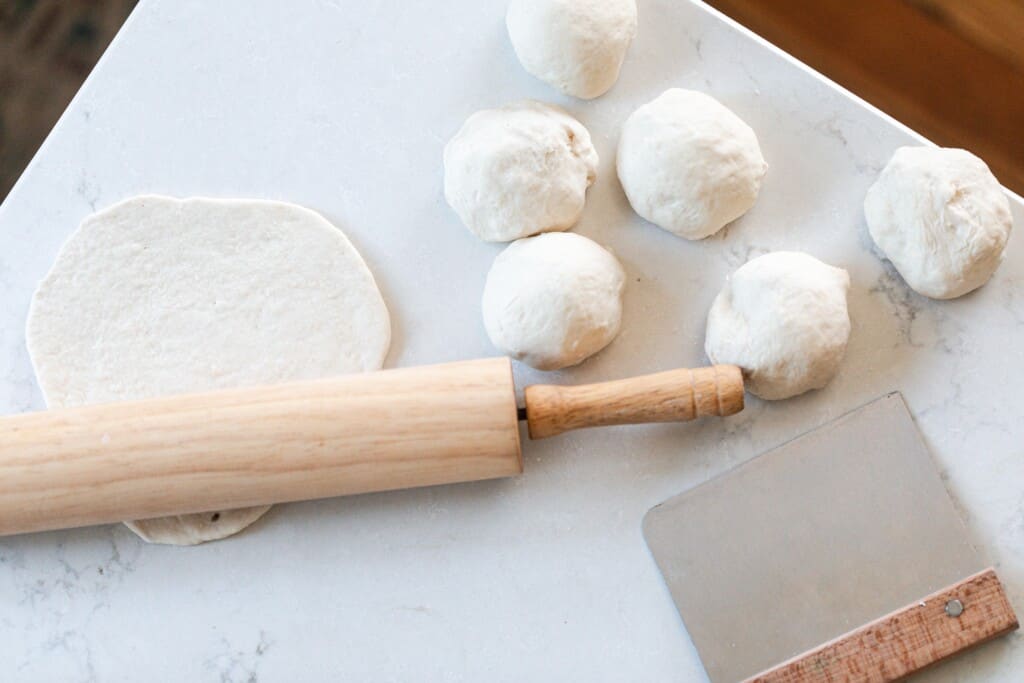
Roll flat (about 1/4” thick) on a lightly floured work surface.
Add a small amount of olive oil to a cast iron skillet and preheat over medium.
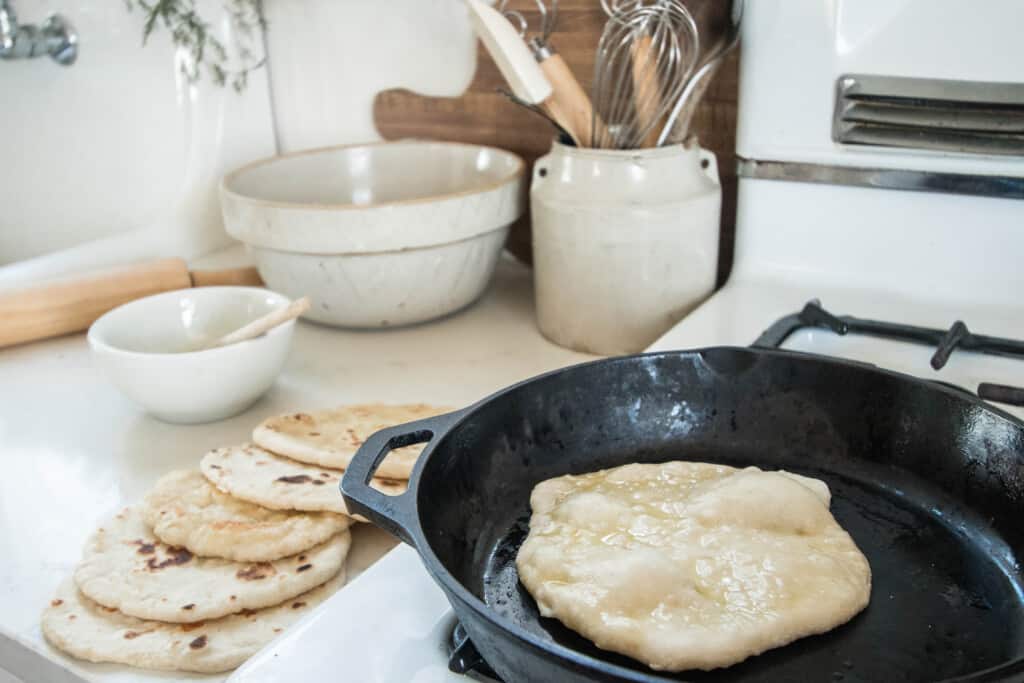
Cook each flatbread for a minute or two on each side until it starts to brown a bit.
Serve as-is, or use them in a variety of ways. See below for just a few ideas.
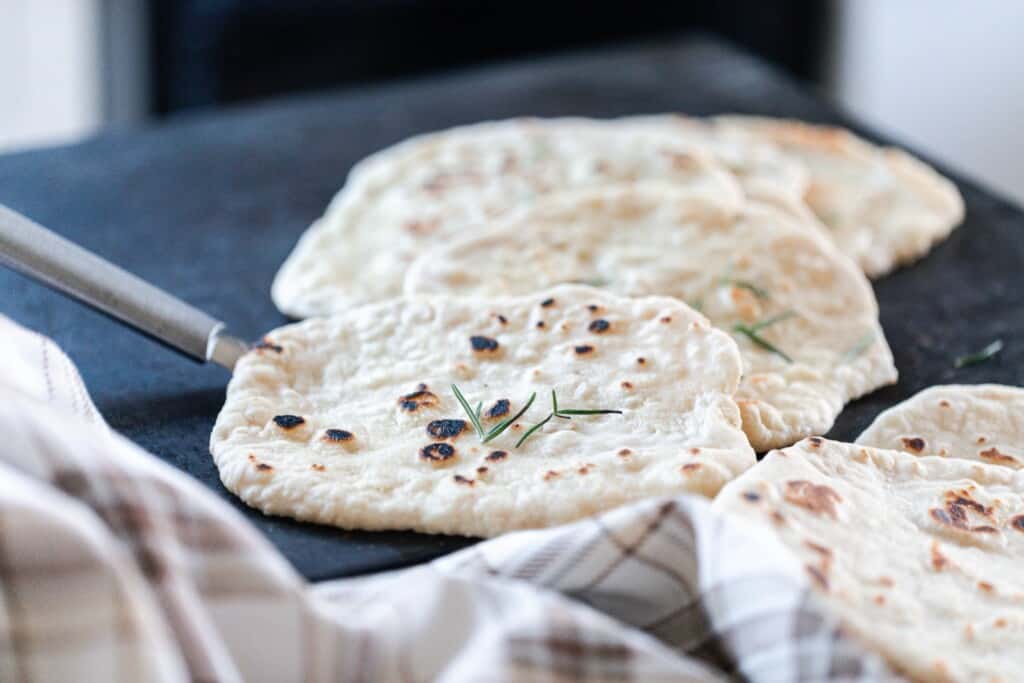
How To Eat Sourdough Flatbread
- Side with soup or salad.
- As a quick and easy homemade pizza crust.
- Yummy sandwich- add your favorite sandwich toppings (i.e: turkey, ham, cheese, lettuce, tomatoes, fermented jalapeños etc), fold it in half and enjoy.
- A delicious breakfast: add spinach, eggs, sausage or bacon, caramelized onions, and cheese.
- As an appetizer with hummus, roasted red peppers, fermented carrots, olives, cheese, etc.
Other Farmhouse On Boone Sourdough Recipes
- How to Make a Sourdough Starter from Scratch
- Sourdough Pancakes (no wait)
- Sourdough French Toast Casserole
- Easy Sourdough Pizza Crust (no wait)
- Sourdough Skillet (no wait)
- Cinnamon Maple Sourdough Apple Pie (no wait)
- Whole Wheat Sourdough Bread
- Sourdough Tortillas
- Sourdough English Muffins
Easy Sourdough Flatbread
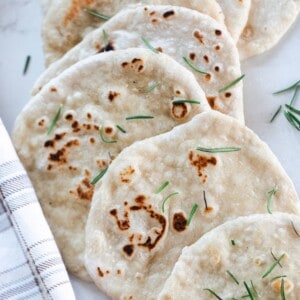
Ingredients
- 2 cups flour
- 1 cup starter
- 1 teaspoon salt
- 1/2 cup milk
- Olive oil for cooking
Instructions
- Mix sourdough starter, flour, milk, and salt together. Knead for a few minutes.
- Cover and allow to rise for for 2-4 hours (or overnight for long fermentation).
- Divide into 8 equal pieces.
- Roll flat (about 1/4” thick) on a lightly floured work surface.
- Add a small amount of olive oil to a cast iron skillet and preheat over medium.
- Cook each flatbread for a minute or two on each side until it starts to brown a bit.
Notes
- To make a dairy-free flatbread, substitute the milk for a dairy-free milk or just use water.
- For this recipe, you can use active sourdough starter or discard, either will work.
- This is a quicker type of sourdough recipe. You can allow it to ferment for 2-4 hours, or up to 24 hours. Whichever you prefer and can tolerate.
Nutrition
Nutrition information is automatically calculated, so should only be used as an approximation.
Go grab some other delicious appetizer recipes for the holiday season:

Veggie Dip by Julie Blanner | Meatballs with Cranberry Chili Sauce by Our Oily House |
Garlic Herb Sourdough Flatbread by Farmhouse on Boone | Baked Chicken Wings by The Cookie Rookie










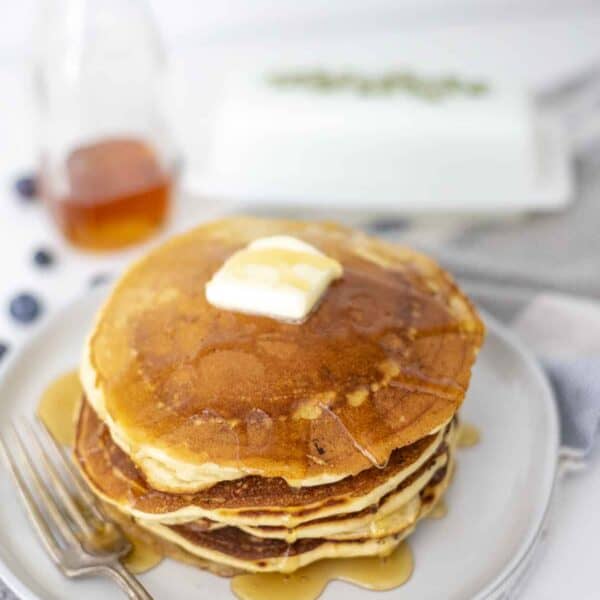






Love this recipe! I’ve made it with sourdough discard and active starter and it is a keeper. My favourite way is to roll it out and stuff picadillo or pizza filling and air frying on 389 for 6 mins. Perfection!
Hi i have been loving these recipes and successful with my starter to feed my family 🙂 thank you for all you do ! I am curious on how you store your freshly baked goods? I’m sure you go through them as a family of nine, but I’m a family of three and they get lost as up to a week. Do I freeze them, how do I reheat them, etc. thank you!
Hi Lisa, thanks for the recipe, please let me know would overnight fermentation cause the flavour to be sour or not? I will try both 2 H and overnight but let me know in advance. Thanks 😊
It is definitely more sour the longer the dough sits out!
Thanks 🥰
Do you ever make these in bulk and freeze?
Hi Lisa, if I ferment this overnight, must I do 4 hours at room temp and then the rest of fermentation in the fridge?
How much would it cost for you to make me a linen throw blanket? 🙂
This recipe was soooo delicious!!! Super easy too! Made it in my cast iron and turned out perfectly!
hi–I tried making these tonight and they just did not turn out 🙁 it didn’t brown, and wasn’t done all the way thru, even though I followed your directions, preheated the cast iron skillet well and baked it for 15 min. Any idea what I may have done wrong? I only made a half batch in a medium size pan.
I just made these and they are SO Delicious!!
I made them on cast iron and they didn’t stick at all. Thank you for the recipe!
Hi Lisa,
I made this today and the result was VERY sour – so sour we couldn’t eat them. Would it have made a significant difference if I had fed the starter in the previous 12-24 hours?